Introducción
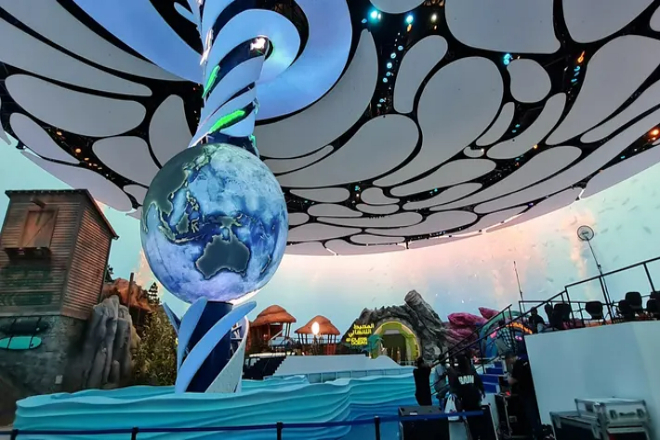
For scenic spots, how to stand out and attract more tourists’ attention and love has become a problem to be solved. And pantallas de visualización LED are one of the key factors to solve this problem.
As a high-end display product, LED display screens can create a popular spot for taking photos and checking in for scenic spots with their own advantages. So, how do I do it?
Method 1: Determine a distinctive and unique theme
In the process of creating the attraction of scenic spots, prompting tourists to take photos and check-in, and increasing the popularity of scenic spots, it is very important to first determine a distinctive and unique theme.
A well-designed theme not only gives the scenic spot a unique personality and charm but also allows tourists to immerse themselves in a specific situation at every moment of the visit, leaving unforgettable good memories.
In order to better shape the characteristics of the scenic spot, you can explore and determine the appropriate theme type from the following aspects:
Suitable theme type:
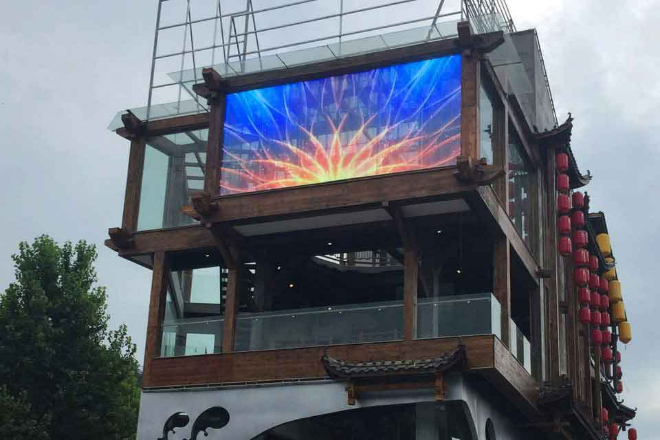
1). Natural scenery:
Suitable for landscape-type scenic spots, emphasizing the magnificence and mystery of nature.
For example, a gran pantalla LED is installed at the entrance of Zhangjiajie National Forest Park.
This screen has become a beautiful landscape in the scenic area, showing the unique karst landscape of Zhangjiajie, such as strange peaks and rocks towering in the clouds and the sea of clouds rolling around the mountains.
These dynamic images are presented in high-definition quality, with vivid colours, making tourists feel as if they are there. Many tourists stopped to watch, took out their mobile phones to take pictures and check-in, and captured the beauty of nature in an instant.
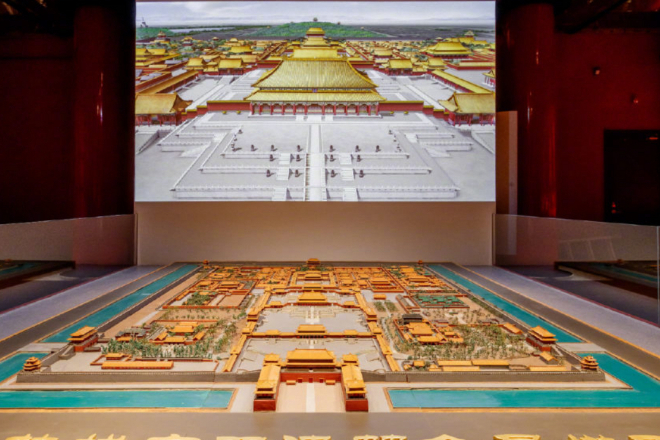
2). Historical culture:
Applicable to ancient sites, museums, etc., highlighting the inheritance of culture and the thickness of history.
For example, the Palace Museo has set up an LED display screen in the square in front of the Hall of Supreme Harmony to play the history of the Palace Museum and the introduction of precious collections.
The screen combines historical photos, cultural relics, pictures and dynamic special effects, vividly showing the glorious journey of the Palace Museum from the royal palaces of the Ming and Qing dynasties to the modern museum.
At the same time, precious cultural relics such as calligraphy and painting, porcelain, and jade collected in the Palace Museum are also displayed, allowing tourists to appreciate the beautiful scenery while also feeling the profoundness of Chinese culture. Tourists took photos in front of the screen to record the historical moments with the Palace Museum.
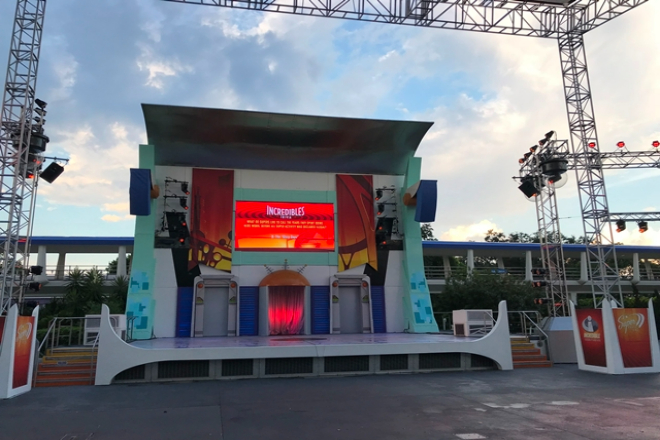
3). Modern technology:
Applicable to science and technology theme parks, future city experience areas, etc., to show the charm and cutting-edge technology.
For example, a huge LED display screen is installed in the “Tomorrowland” area of Shanghai Disneyland. This screen has become a technological highlight in the park, showing sci-fi scenes of the future city, such as flying cars shuttling in the sky and robots patrolling the streets.
These imaginative pictures complement the amusement facilities in the park, bringing tourists a feast of technology and fantasy. Many tourists take photos and check in here as if they are in the future world and feel the infinite charm of technology.
Method 2: Create a visually impactful scene
First, you have to choose a good place with a large flow of people and a wide view, and then install an LED display screen of the right size and cool shape. As for the content, of course, it must be designed to be both attractive and impactful.
It can be a dynamic display of the characteristic scenery of the scenic spot, or it can be a gorgeous colour or 3D effect related to the theme of the scenic spot. For example, if the scenic spot is a landscape, you can play a dynamic picture of mountains and rivers。
If it is a historical and cultural scenic spot, you can show vivid pictures of ancient legends or historical figures.
In terms of technology, you have to choose a high-quality LED display screen with clear and bright pictures. Then, advanced control systems and playback software are used to make the picture move and perfectly match other elements, such as music and lighting.
Don’t forget to consider the outdoor environment and choose a waterproof, sun-proof and wind-resistant display screen so that it can be durable.
You can also add some interactive elements, such as touch screens, sensors, etc., so that tourists can not only watch but also play.
Set up an interactive game or a photo-taking check-in point so that tourists can feel the fun in participating, and share beautiful photos to Moments to promote the scenic spot for free.
For example, Japan’s kitten display screen is located in the core area of the pedestrian street, and it has attracted the attention of many tourists with its ultra-high-definition picture quality and naked-eye 3D effect.
Various personalized and immersive interactive content is played on the screen, such as giant 3D cute cats “jumping out” from the screen and astronauts walking in space. These vivid images and stunning visual effects make tourists feel as if they are in a dream world. They take out their mobile phones to take photos, check-in and share this unique experience on social media.
(The video comes from YouTube user: Pierpi)
Method 3: Incorporate interactive experience elements
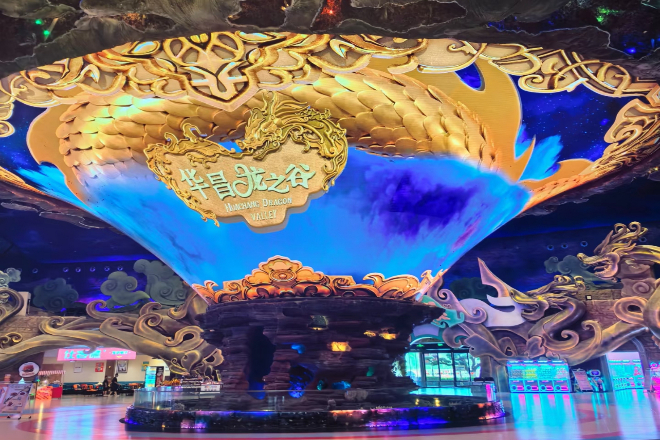
Want to make the scenic spot more lively and interesting so that tourists are not just spectators but become part of it? Then, you have to try to integrate the interactive experience elements of LED display screens into the scenic spot!
For example, you can design some interesting interactive games, allowing tourists to interact with the display screen through touch screens or mobile phone APPs. The content of the game can be combined with the characteristics of the scenic spot.
For example, if it is a natural scenic spot, you can design a small game to find hidden animals or plants; if it is a historical and cultural scenic spot, you can design a question-and-answer game about historical knowledge.
In addition to games, you can also use LED display screens to create some interactive points for taking photos and checking in. For example, set up some dynamic background pictures so that tourists can stand in front of them to take pictures as if they are in a fantasy world.
Or, use the special effects function of the display screen to allow tourists to have some interesting special effects when taking pictures, such as growing horns on their heads and wings behind them, making the photos more interesting.
In order to achieve these interactive experiences, you need to choose an LED display with touch or sensing functions and equip it with a corresponding interactive software system. In this way, visitors can easily interact with the display and enjoy unprecedented fun.
Of course, the content of the interactive experience also needs to be constantly updated and optimized to keep visitors fresh and interested.
You can design different interactive experience content according to seasons, festivals or special activities in scenic spots, so that visitors can have new discoveries and new surprises every time they come.
For example, in Nanjing Huachang Dragon Valley Theme Park, a giant creative LED horn screen has become a hot spot for tourists to check-in. This screen is not only unique in appearance, like a huge horn shape but also incorporates a variety of interactive experience elements.
Visitors can trigger the display of dragon element special effects by touching specific areas on the screen, such as flashing dragon scales and dragon mouths spitting fire. At the same time, the picture on the screen will respond accordingly to the actions and sounds of the visitors.
For example, when visitors approach the screen, the dragon in the picture will “wink” or “roar” at the visitors. This interactive experience method makes tourists enjoy it, and they take pictures and share them on social media, creating a unique landscape in the park.
Method 4: Combine with landmark buildings or sculptures
Installing LED screens on landmark buildings or sculptures in scenic spots can add dynamic elements to these static landscapes.
For example, if there is an iconic sculpture in the scenic area, we can set up LED screens on a part of or around the sculpture to play dynamic pictures or artistic effects related to the theme of the sculpture. In this way, the sculpture is no longer just a piece of art, but a living “character” that can tell a story.
For landmark buildings, we can install LED screens on the walls, roofs or edges of the buildings to display content related to the history, culture or characteristics of the building.
For example, if it is an ancient castle, the historical changes, important events or legends of the castle can be played on the screen, so that tourists can learn more about the cultural background while appreciating the beauty of the building.
The LED screens combined with landmark buildings or sculptures can also be used to present some special visual effects.
For example, using the transparent or translucent characteristics of the display screen, a virtual-real combination effect is created, so that the building or sculpture seems to be integrated with the surrounding environment, creating a dreamlike atmosphere.
Method 5: Use lighting effects to create an atmosphere
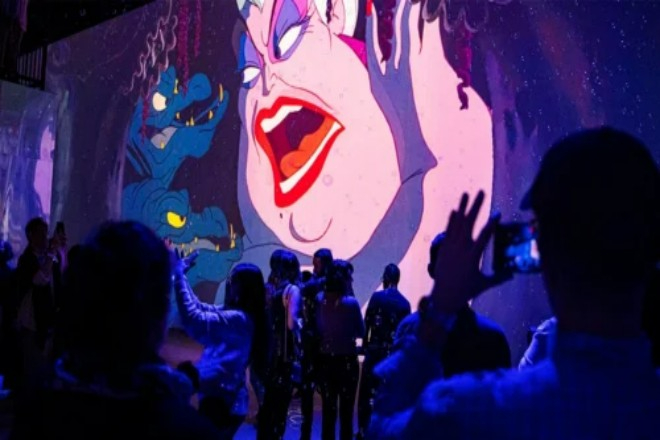
In key areas of the scenic area, you can set up large LED screens to play dynamic images that match the theme of the scenic area. And around these screens, or in positions that echo the screens, we can arrange a variety of lighting devices.
These lights can be soft warm tones to create a warm and comfortable atmosphere; or they can be cold tones to bring a mysterious, sci-fi feeling.
Even better, you can use the programmability of LED lights to change the images on the display. For example, when the display is playing a warm celebration scene, the surrounding lights can flicker and change, as if the entire scenic area is immersed in the joy of the festival.
When the display shows a tranquil lake, the lights can become soft and calm, so that visitors can feel the breeze on the lake.
In addition, you can also use a combination of lights and displays to create some unique visual effects. For example, through the projection of lights and the reflection of the display, create a combination of virtual and real, dreamy picture effects.
Or use the dynamic changes of lights to form a sharp contrast with the static pictures on the display, thereby enhancing the visual impact.
When implementing this plan, you need to carefully plan the layout of the lights and displays to ensure that they complement each other.
At the same time, you should also choose high-quality LED lighting and display products to ensure that they can present the best visual effects and are durable.
Take Disneyland as an example. Every corner here is full of the magic brought by lights. At the entrance of the park, a giant LED display screen is designed in the shape of a castle. At night, a colourful light show begins on the display screen.
The outline of the castle appears more mysterious and romantic under the light. Such lighting effects complement the overall environment of the park, creating one unforgettable photo-taking scene after another for tourists.
Method 6: Pay attention to details and humanized design
Details determine success or failure, and humanized design can make tourists feel more considerate of service. Take Singapore’s Gardens by the Bay as an example. The supertree here is a popular place for tourists to take photos and check-in.
In order to enhance the tourists’ photo experience, the park has set up an LED display screen near the supertree and equipped it with a series of humanized designs.
This LED display screen shows the time and content of the Super Tree light show in real-time so that tourists can arrange their photo plans in advance. At the same time, the park also set up a photo reminder sign next to the display screen to tell tourists the best photo angles and postures. It even provided photo props such as colourful balloons and garlands.
In addition, considering that tourists may need to take photos at night, the park also installed soft lighting around the display screen to ensure that tourists can take clear and beautiful photos. These details and humanized designs make tourists feel more comfortable and pleasant while taking photos and checking in.
Conclusión
In summary, the application of LED display screens in scenic spots provides tourists with a rich and colourful photo-taking and checking-in experience, which not only enhances the attractiveness and competitiveness of scenic spots but also promotes the dissemination of scenic spot culture and the growth of tourist traffic.
Finalmente, si quieres saber más sobre las pantallas LED, Por favor póngase en contacto con nosotros.
